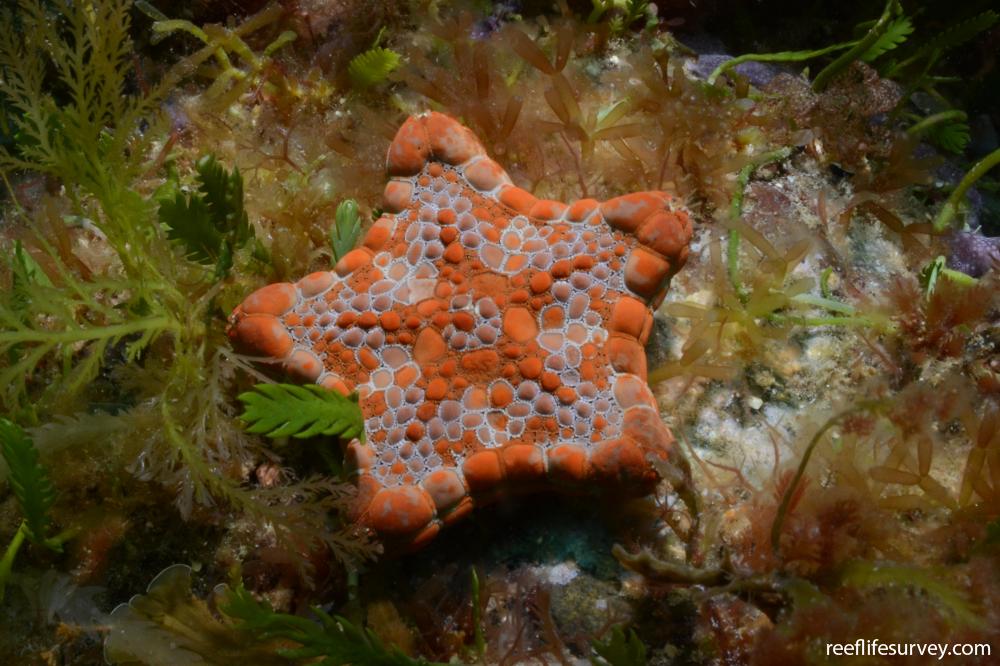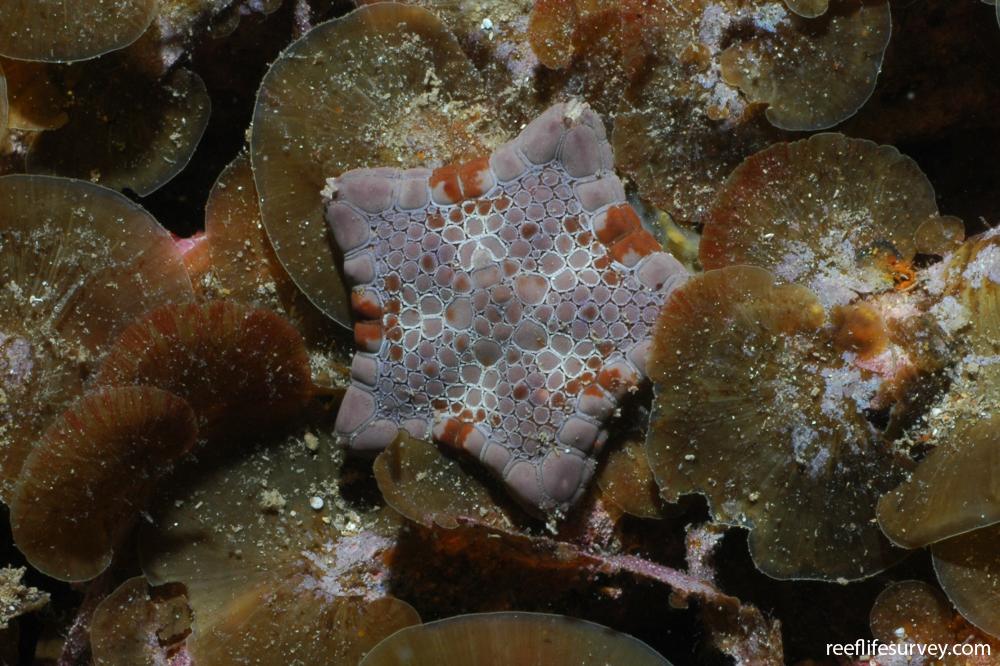Tosia australis
Southern biscuit starSimilar Species
Same Genus
Distribution
Temperate Australasia
Description
Tosia australis has six (or very rarely, eight) large superomarginal plates along each side of the body. Individuals from highly exposed coasts have greatly swollen plates at the ends of the arms. T. australis is found in slightly more exposed habitats than T. magnifica and feeds mostly on ascidians, sponges, bryozoans and algae. A third species, Tosia neossia, also has 6-8 superomarginal plates, and may occasionally be found close to T australis specimens.
Distinguish as follows:
T magnifica: up to 16 superomarginal plates. Range - Tasmania, Victoria, South Australia (not confirmed from WA).
T australis: 6-8 superomarginal plates. No granules on oral plates (the plates closest to the mouth on the underside). One to three or more colours; patterns - none to variable. Widest range - from Kalbarri, WA through all of Victoria and Tasmania.
T neossia: 6-8 superomarginal plates. Granules on oral plates (in practice it appears that most but not all plates on the underside are granulated, cf. T australis none to few). Consistent two-colour pattern using (e.g.) light brown, dark brown, cream, reddish-orange, black. Narrowest range - Westernport, Victoria to Port Macdonnell, SA; east and south Tasmania.
Read more about this species HERE.
Information
Max Size: 10 cm
Sea Temperature Range: 10.3-22.1°C
Depth: 0-40 m
Habitat Generalization Index: N/A
Also referred to as the SGI (Species Generalisation Index), this describes the habitat niche breadth of the species. Species with values less than 15 are found in a relatively narrow range of reef habitat types (specialists), while those over 25 may be found on most hard substrates within their range (generalists). Learn more here.
Conservation and Rarity
IUCN Status: Not Evaluated
Occurrence: Common (38.3% of sites)
Occurrence describes how often the species is found on surveys within its distribution. It is calculated as the % of reef sites surveyed by RLS divers across all the ecoregions in which the species has been observed
Abundance: Few (3 per transect)
Abundance is calculated as the average number of individuals recorded per RLS transect, where present.
Edit by: GJ Edgar. 2008. Australian Marine Life. New Holland, Sydney, Andrew Green




















